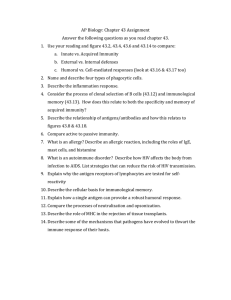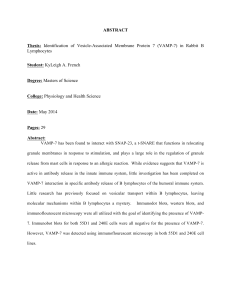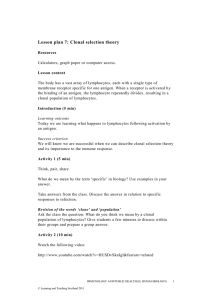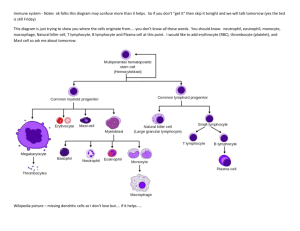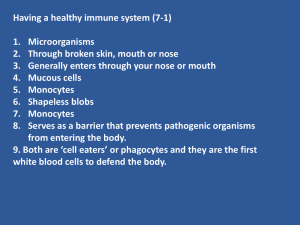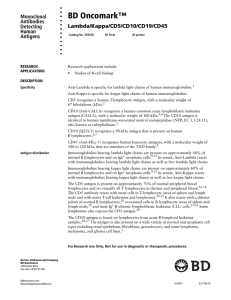Lesson plan 11: Antigen-presenting cells and memory cells
advertisement
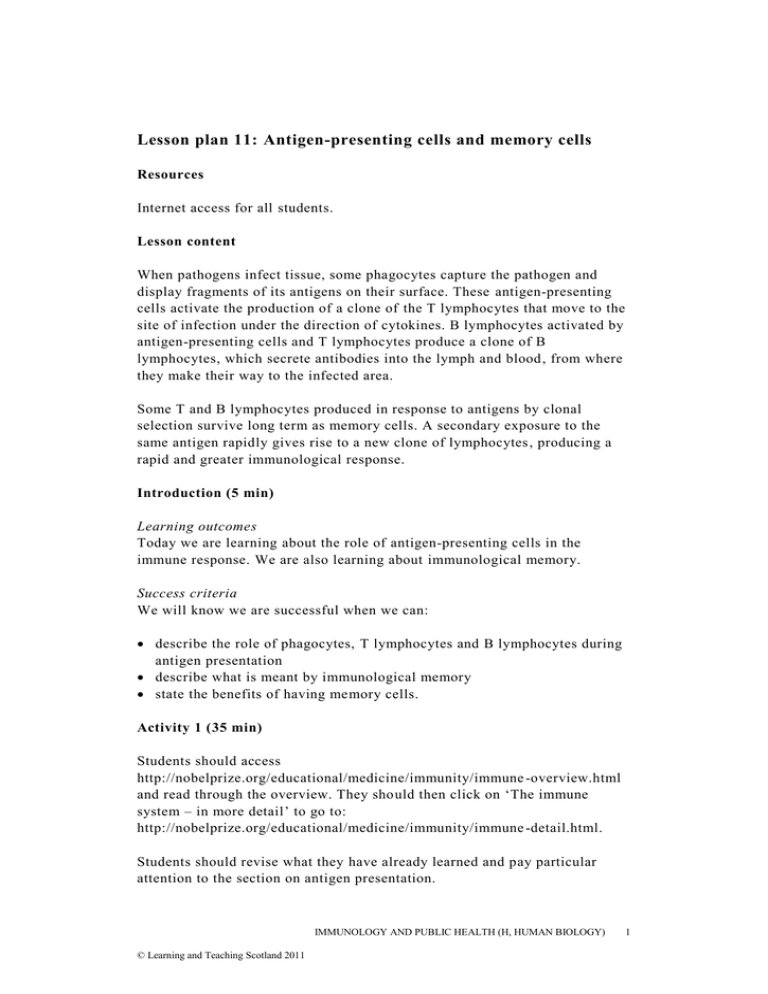
Lesson plan 11: Antigen-presenting cells and memory cells Resources Internet access for all students. Lesson content When pathogens infect tissue, some phagocytes capture the pathogen and display fragments of its antigens on their surface. These antigen-presenting cells activate the production of a clone of the T lymphocytes that move to the site of infection under the direction of cytokines. B lymphocytes activated by antigen-presenting cells and T lymphocytes produce a clone of B lymphocytes, which secrete antibodies into the lymph and blood, from where they make their way to the infected area. Some T and B lymphocytes produced in response to antigens by clonal selection survive long term as memory cells. A secondary exposure to the same antigen rapidly gives rise to a new clone of lymphocytes, producing a rapid and greater immunological response. Introduction (5 min) Learning outcomes Today we are learning about the role of antigen-presenting cells in the immune response. We are also learning about immunological memory. Success criteria We will know we are successful when we can: describe the role of phagocytes, T lymphocytes and B lymphocytes during antigen presentation describe what is meant by immunological memory state the benefits of having memory cells. Activity 1 (35 min) Students should access http://nobelprize.org/educational/medicine/immunity/immune -overview.html and read through the overview. They should then click on ‘The immune system – in more detail’ to go to: http://nobelprize.org/educational/medicine/immunity/immune -detail.html. Students should revise what they have already learned and pay particular attention to the section on antigen presentation. IMMUNOLOGY AND PUBLIC HEALTH (H, HUMAN BIOLOGY) © Learning and Teaching Scotland 2011 1 Students should make notes to add to what they already have on other aspects of the immune system. They should then make new notes on antigen presentation and immunological memory. Students should sketch and label the diagrams on antigen presentation and immunological memory. Activity 2 (10 min) Once students have finished making their own notes they should then play the game immune system defenders. See: http://nobelprize.org/educational/medicine/immunity/game/index.html Plenary (5 min) Refer to the learning outcomes and success criteria – have the success criteria been achieved? 2 IMMUNOLOGY AND PUBLIC HEALTH (H, HUMAN BIOLOGY) © Learning and Teaching Scotland 2011
